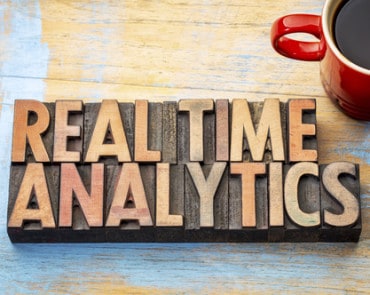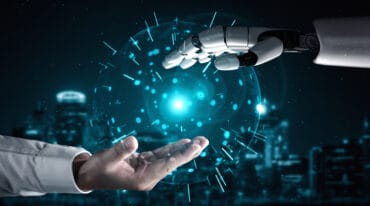
Most industrial organizations now have CEO-driven industrial AI strategies, reflecting a shift from experimentation to enterprise-wide implementation.
Industrial organizations have long used predictive and prescriptive analytics to get insights into IoT and other data for predictive maintenance and to improve operational efficiencies. Increasingly, they are complementing those efforts by embracing artificial intelligence and specifically AI agents.
That move to AI has reached a critical inflection point, according to the recently released Industrial AI Market Report 2025–2030 from IoT Analytics. Thereport finds that the global industrial AI market was valued at $43.6 billion in 2024 and is projected to expand at a compound annual growth rate (CAGR) of 23%, reaching $153.9 billion by 2030. Perhaps more importantly, the report finds that most manufacturers now have CEO-driven AI strategies, reflecting a shift from experimentation to enterprise-wide implementation.
According to the report, five focus areas are emerging as central to these strategies. They are industrial data management and architectures, AI for quality and inspection, edge AI, industrial copilots, and workforce upskilling. These priorities align with the sector’s push toward operational efficiency, predictive maintenance, and smarter decision-making at the edge.
When the report was released, Knud Lasse Lueth, CEO of IoT Analytics, put the trends into perspective, noting that there is an accelerating pace of adoption. “The focus has shifted to modernizing data architectures and scaling proven use cases such as quality inspection,” said Lueth in a public statement. He also noted that following the wave of industrial copilots launched in 2024 and 2025, edge AI and agentic AI will dominate attention heading into 2026.
Fernando Brügge, Senior Analyst at IoT Analytics, added that “Industrial AI is finally taking off. Today, we see AI becoming a central part of manufacturers’ strategies.” He contrasted the current momentum with the challenges of early AI deployments in 2021, when “many companies struggled to identify a business case or derive real value from early deployments.” Now, with better infrastructure and greater end-user understanding, “industrial AI will not just support operations but increasingly shape how machines are designed, how supply chains are managed, and how factories compete.”
The main conclusion to draw from the report’s findings is that industrial AI will be a foundational technology for the next decade of manufacturing. It will be driven by executive leadership, enabled by robust data systems, and will expand from pilot projects to enterprise-scale transformation.
Industrial AI Moves Beyond Pilot Stage
Industrial AI is no longer an experimental technology; it has become a mainstream technology. It delivers tangible and repeatable business value. Some firms highlighted in the report claim that industrial AI deployments are now yielding nine-digit savings, demonstrating that the technology’s impact extends well beyond the proof-of-concept stage.
The report contrasts the performance of industrial AI with broader enterprise AI trends, noting that while “some outlets report 95% failure rates for enterprise AI pilots,” industrial AI projects “have already proven their value through measurable cost savings, uptime improvements, and quality gains.” In fact, IoT Analytics found that machine vision had the highest ROI and fastest payback period of all Industry 4.0 technologies, driven by AI-assisted flaw detection and process optimization.
Several industrial success stories provided by IoT Analytics underscore this trend. At Renault SA, then-CEO Luca de Meo reported €270 million in savings on energy and maintenance costs during the company’s 2023 fiscal year, attributed to the use of predictive maintenance AI tools. Meanwhile, Georgia-Pacific achieved hundreds of millions of dollars in annual value capture through AI applications, including a generative AI-based document tool, a real-time operator guidance chatbot, and AI-powered vision systems for automated defect detection. These examples demonstrate that, in industrial contexts, the ROI of AI is quantifiable and accelerating.
However, capturing such value depends heavily on data infrastructure readiness. The report notes, “renewed interest in industrial AI is changing how manufacturers approach data management.” Legacy data silos, including SCADA networks and MES systems, are being replaced by scalable data architectures that can support real-time, context-rich analytics.
See also: Why DataOps Is Critical to Successfully Scaling AI
Data Architecture is the Key to Success Scaling
A key enabler of this shift is industrial DataOps, now identified as the fastest-growing software segment in the sector, with a projected 49% CAGR through 2028. Vendors in the market, such as Cognite, are leading innovation by integrating edge-deployed language models and agentic AI workflows into their platforms. At the same time, manufacturers are consolidating their data into unified lakehouse architectures, enabling data lineage and shared context across functions.
Bottom line: A scalable data infrastructure is required for industrial AI success. Such an infrastructure enables organizations to transform once-fragmented data environments into a foundational element for scaling industrial AI.





